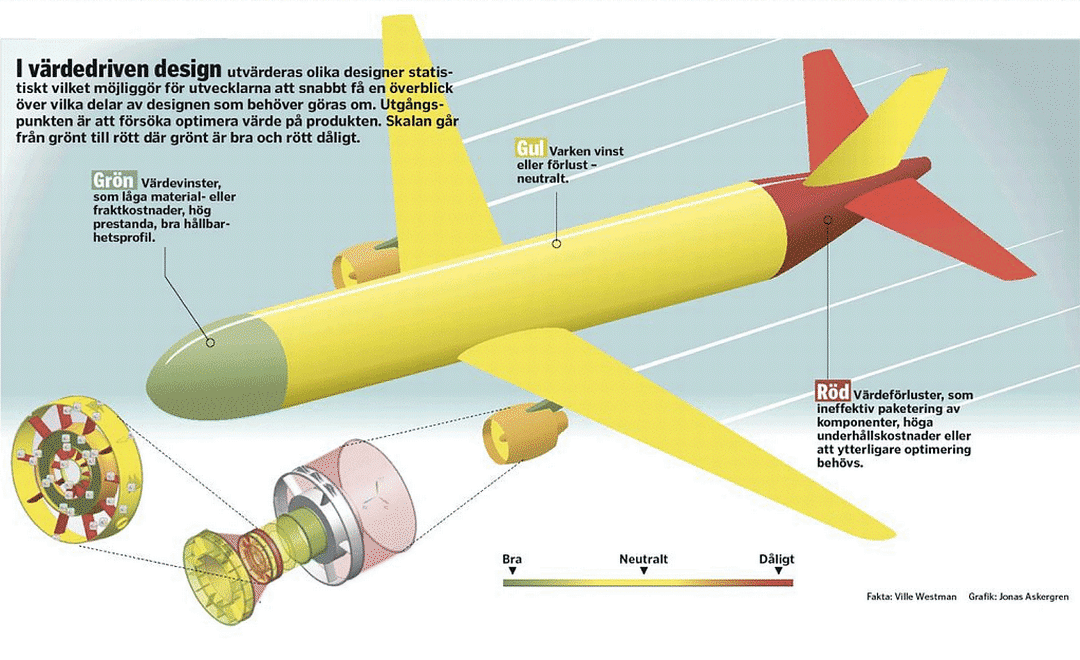
Value-Driven Design – sustainable products and service innovation with value in focus
- Post by: Marco Bertoni
- 15th November 2016
- 5 Comments
In 1903, Charlie Taylor was given the task to design a completely new engine able to propel the first ever heavier-than-air powered aircraft. While ambitious, the main design challenge at that time was pretty straightforward: to mitigate the risk of torque effects from affecting the aircraft handling. This problem was successfully solved by crossing one drive chain over the other, so that the propellers could rotate in opposite directions. Almost 120 years later, his modern colleagues at Rolls Royce Plc describe the issues related to a new aero-engine development program by using expressions such as ‘Power-by-the-our’, ‘predictable cost of ownership’ and ‘product stewardship’.
These new objectives are children of the increased ‘servitization’ of the manufacturing industry. The development of extended product warranties, leasing or pay-per-use schemes is driven by the opportunity to maximise value for customers and stakeholders. For instance, by maintaining ownership over the product, aero-engine manufacturers can minimise operational disruptions and improve engine efficiency through better predictive maintenance planning.
Even though several successful examples of the implementation of such a Product-Service System (PSS) paradigm are documented in literature, its uptake remains limited in industry. Many companies struggle in this transition, mainly because straightforward mechanical challenges have become a complex trade-off game between satisfying the product requirements while ensuring maximum value provision along the entire lifecycle of the product.
Value-Driven Design (VDD) research wants to understand how ‘value’ can be modelled and visualized in the engineering decision making process, so to guide early stage generation and selection of design concepts.
The European FP7 CRESCENDO project stands out as one of the main hubs for the development of “value models” to support design decision making. Here, Marco Bertoni, Alessandro Bertoni and Christian Johansson have been main contributors to the improvement of value-based decision-making models. This research was initiated by Professors Tobias Larsson (then at Luleå University of Technology) and Ola Isaksson (previously at LTU, and now at Chalmers) during the VIVACE EU FP6 programme.
The development of ‘value models’ to complement traditional requirements engineering practices lies at the core of the research work. Four different – and interlinked – value model types are proposed to support decision making in the early stages of the design process. A detailed description of these models and of the red thread between them can be found here.
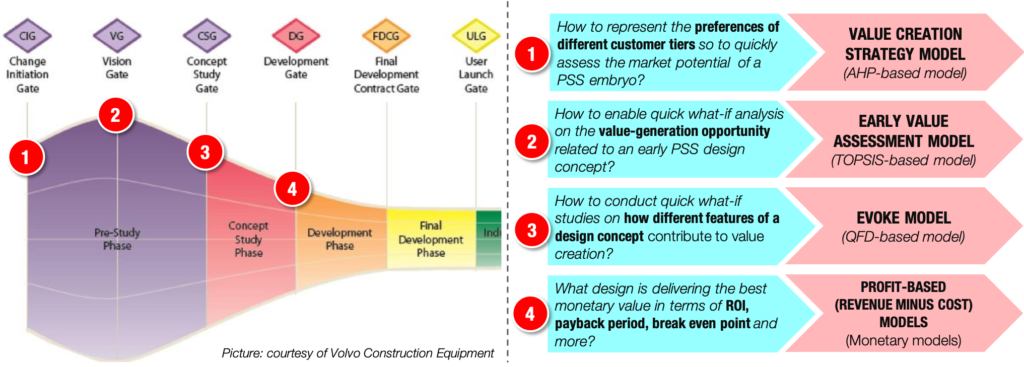
The concept of Value Creation Strategy (described here) is proposed to systematically capture needs and value dimensions that characterise different customers and stakeholders for the PSS. The VCS includes both tangible and intangible value criteria (from asset availability to environmental protection, see the left side of the picture below). These are used to represent the specific preferences of the target group for the solution (customers, stakeholders and society at large), and to tune the value assessment models in a later stage.
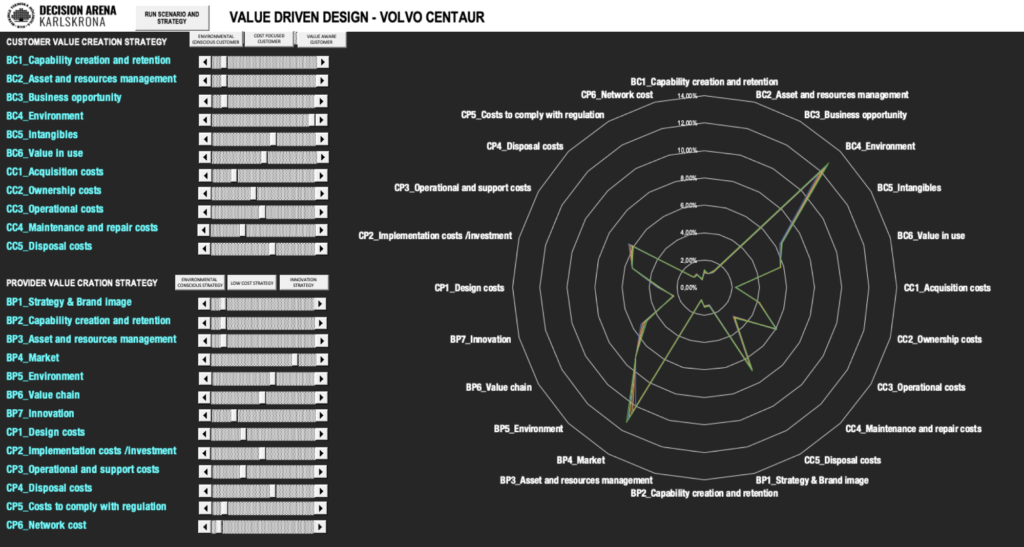
In the next step, qualitative and semi-quantitative models are used to support the selection of PSS embryos at the decision gates. The EVA (see detailed description here) and EVOKE (see detailed description here) models are 2 major results in this area. EVOKE was demonstrated in a number of case studies, from aerospace (within the EU FP7 CRESCENDO and VINNOVA VITUM projects) to construction equipment, packaging solutions and pipeline systems. The EVOKE model can be downloaded and tested at this link.
Profit-based models are later used to benchmark the value of different product platform configurations from a monetary perspective (see detailed description here). Net Present Value (NPV) models are a common tool in VDD to highlight the revenue-generation opportunity linked to a radical design or technology. The picture below show how the NPV results can be displayed to the design team in the Decision Arena. The latter is intended as a ‘war room’ for PSS design decision makers participating to gate meetings (see detailed description here).
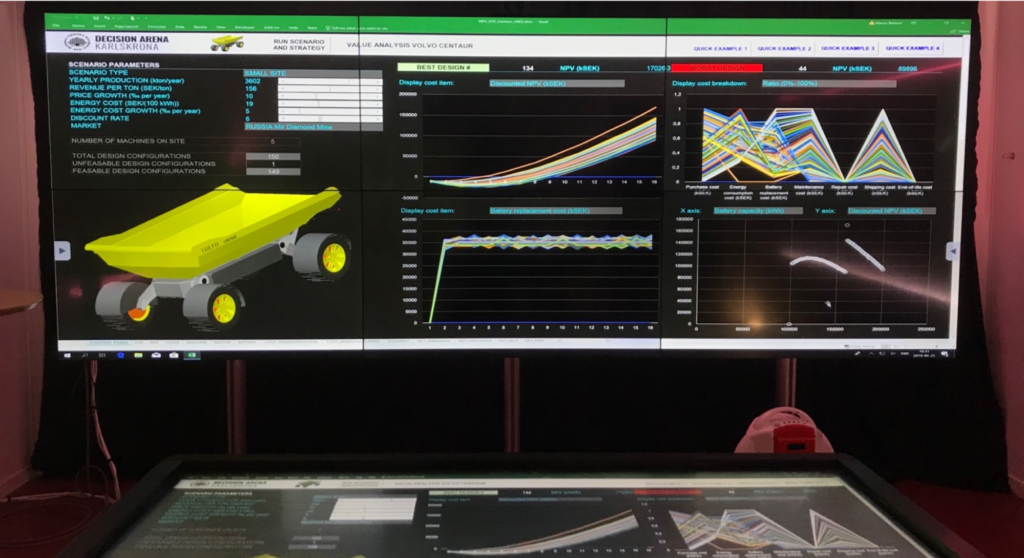
The development of Profit-based model is supported by life-cycle simulations based on a Discrete Event (DES) logic. The latter are used to to assess the behaviour of the PSS during the operational and end-of-life phases, so to populate the monetary models. The video below shows how DES was applied in the mining industry within the KKS STOSIP project at BTH. while an application example from the road construction equipment sector con be found here.
The Research also recognises that the input data are uncertain and uses the concept of Knowledge Maturity to give a feedback to the engineering team on how much the assessment can be trusted. See the Knowledge Maturity paper for more info.
Value model results are further linked to the geometry and requirements of a product by the use of color coding 3D models in the Computer Aided Design environment. The approach has been prototyped in collaboration with SIEMENS PLM systems and tested in lab. See the color coding paper for more info.
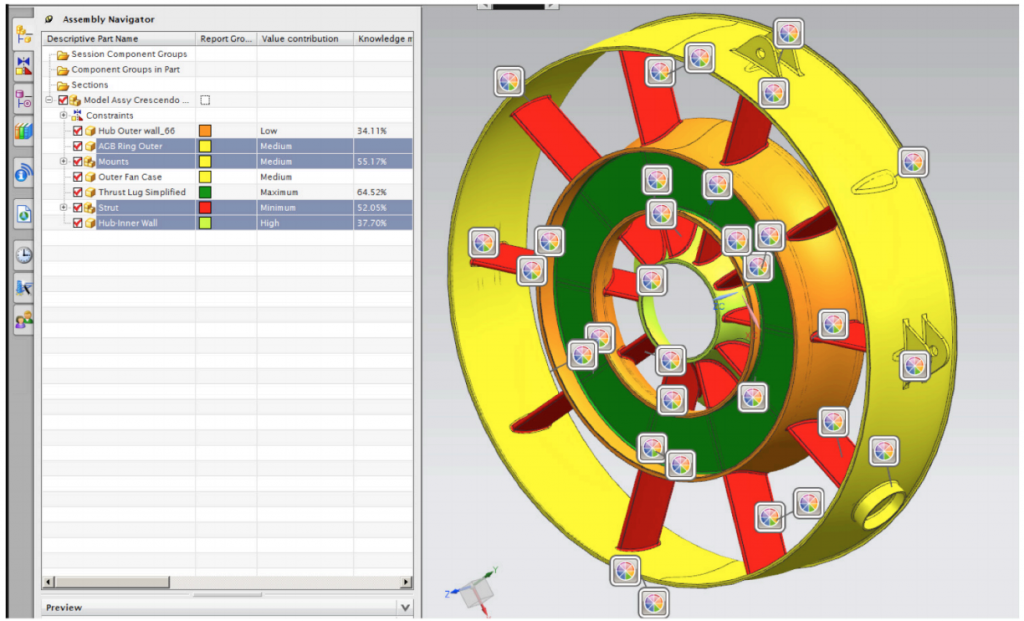
Readings
- Related research papers and readings from PDRL on Value Driven Design may be found here: https://www.productdevelopment.se/?s=value+driven+design
- https://bit.ly/2sskcjg
Projects where this research has evolved
- VIVACE: http://cordis.europa.eu/result/rcn/47814_en.html
- CRESCENDO: http://cordis.europa.eu/result/rcn/140562_en.html
- KKS Model Driven Development and Decision Support – MD3S: https://www.productdevelopment.se/?p=68
- VINNOVA VITUM: https://www.productdevelopment.se/?p=1518
- KKS STOSIP: https://www.productdevelopment.se/?p=548
- Electric infrastructure creation | 2021: https://www.productdevelopment.se/?p=11120
- eTWIN – Digital-Twin enabled Transition into Electromobility and Autonomy in Construction Equipment | 2021: https://www.productdevelopment.se/?p=11438
- Future Fossil Free Rock Loading Solution | 2022- : https://www.productdevelopment.se/?p=12601
- VaViM – Validation of virtual models used for simulation of autonomous vehicle systems | 2022- : https://www.productdevelopment.se/?p=12403
- ASPECT – A System for Electric and Connected Transport Solutions | 2021- : https://www.productdevelopment.se/?p=12235
- TRUST-SOS – TRUSTed – Site Optimisation Solutions | 2021-: https://www.productdevelopment.se/?p=12231
Contacts
- Professor Tobias Larsson
- Professor Marco Bertoni
- Assistant Professor Christian Johansson
- Assistant Professor Alessandro Bertoni

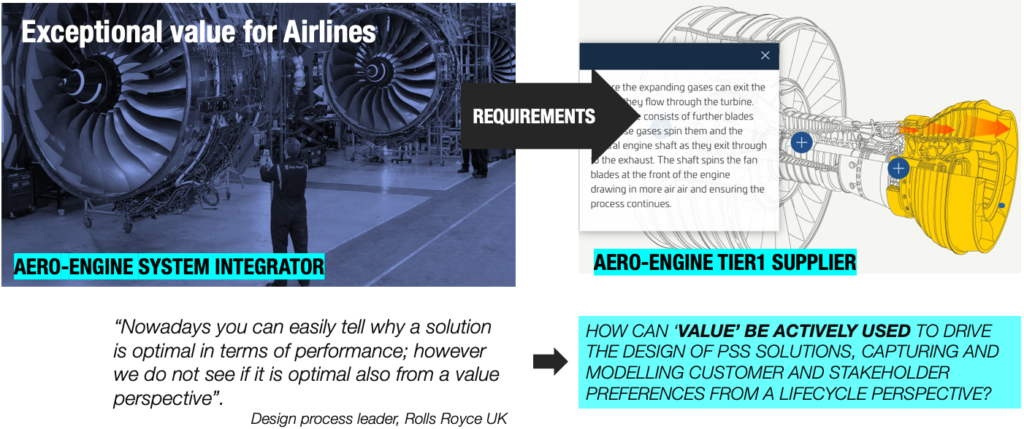
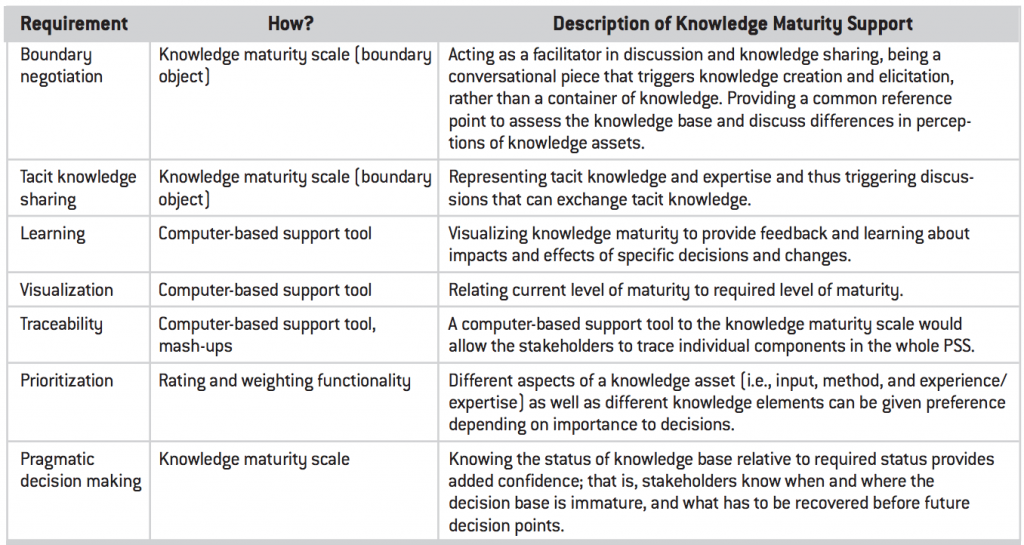
5 Comments on “Value-Driven Design – sustainable products and service innovation with value in focus”
Comments are closed.